Discover 10 Types of Butterfly
Butterflies are beautiful creatures that typically have magnificent coloring and are associated with sunshine, flowers, transformation, hope, and freedom. They play important roles in the ecosystem as pollinators and food sources.
They can adapt to all sorts of habitats, from forests to the Arctic tundra, and assist in maintaining an eco-friendly balance that helps environments thrive. Nearly one-third of the food we eat is dependent on pollination by creatures like butterflies.
In terms of pollination, butterflies tend to prefer taking care of herbs and vegetables, leaving fruit to their distant apian relatives. Examples of plants different types of butterflies pollinate include: artichokes, basil, beans, cabbages, cauliflower, celery, cilantro, and parsnips. These beautiful arthropods also pollinate cotton, a key crop.
How Many Types of Butterflies Are There?
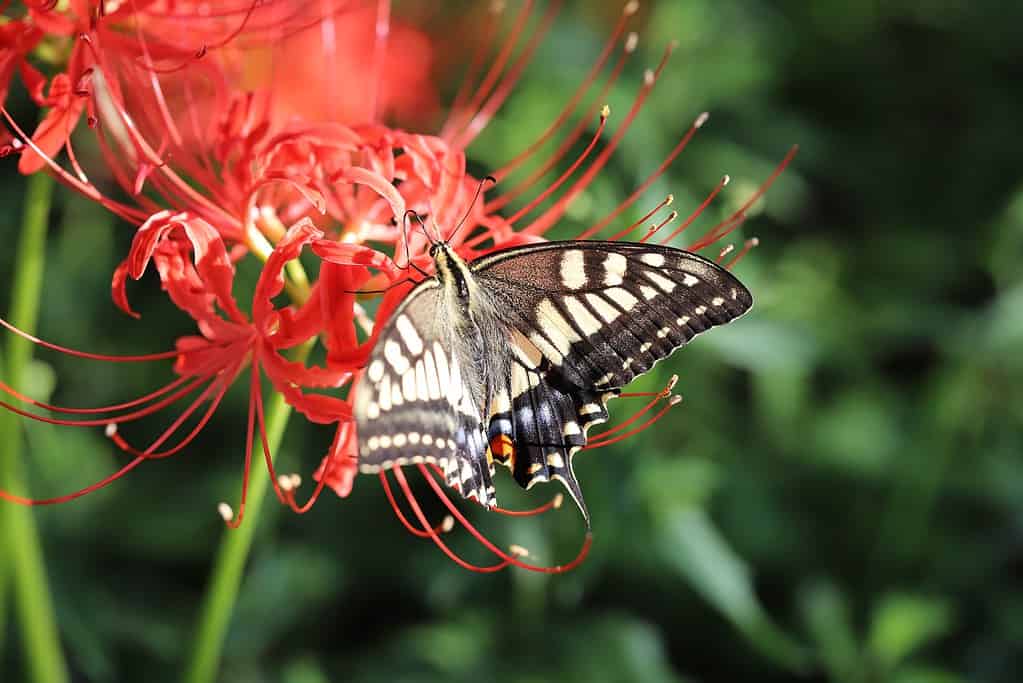
It’s thought that there are more than 17,500 butterfly types across the world, with some estimating up to 20,000 butterfly species on Earth. In the United States, approximately 750 species of butterfly are present.
Butterflies belong to the Lepidoptera order of insects that also includes moths. Lepidoptera covers 180,000 species in 126 families, making it one of the world’s most widespread and recognizable insect orders.
While there is some debate about the classification of butterflies, they can be considered as comprising of the following six families:
- Hesperiidae: Including around 3,000 species in the world and called Skippers
- Lycaenidae: Covering more than 5,000 species, including Blues, Hairstreaks and Coppers
- Nymphalidae: With around 5,000 species, known as Brush-Footed Butterflies
- Papilionidae: Consisting of about 600 species, referred to as Swallowtails
- Pieridae: Encompassing more than 1,000 species, called Whites and Yellows/Sulphurs
- Riodinidae: Estimated to have approximately 1,000 species, with the common name of Metalmarks.
Keep reading for a look at 10 of the most beautiful common butterflies.
1. Brush-Footed
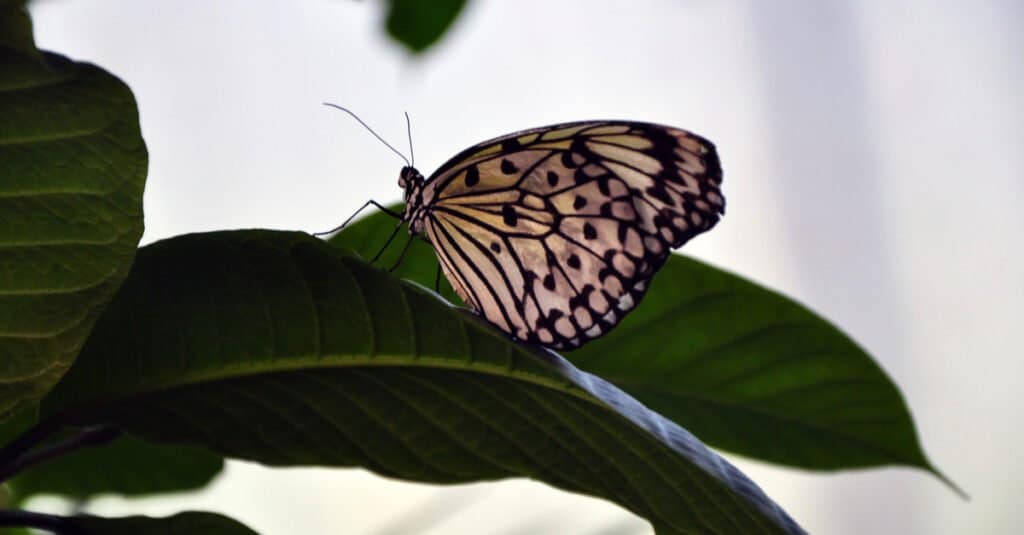
The brush-footed butterfly family (Nymphalidae) is the largest, with around 6,000 species in it. These butterflies are also sometimes called the four-footed butterflies because they only use four legs for walking (the other two legs curl.)
These butterflies are named for their characteristically smaller forelegs that tend to appear fuzzy and resemble brushes. Not only do they have feet that look like brush, they also have a pair of antennas that come out of the tops of their heads.
Brush footed butterflies are generally medium to large size and have a wing size between 1.5 and 3.5 inches. Their wing colors are typically yellow, brown, and white with colored markings on the undersurface. Those colors tend to be duller.
2. Monarch
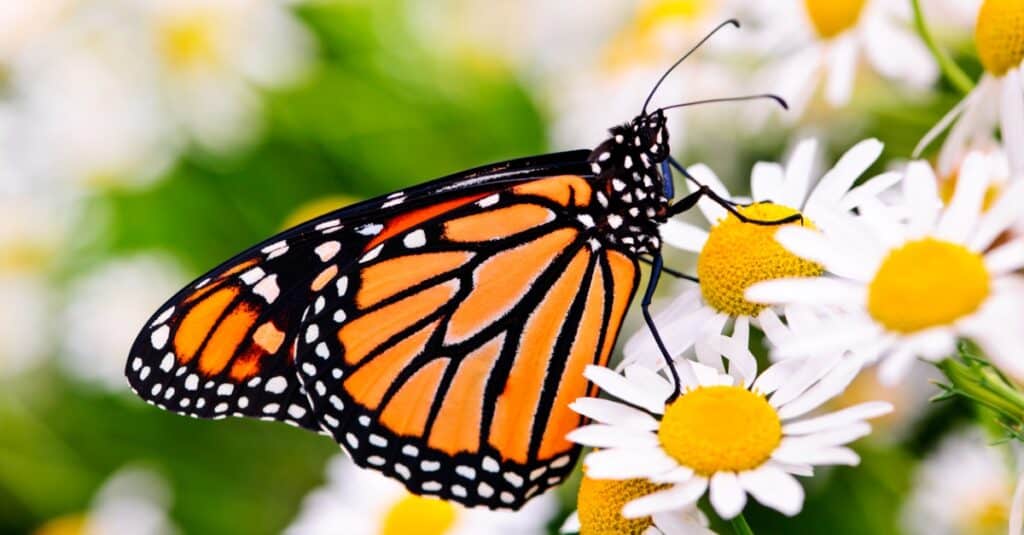
A common butterfly, the monarch still manages to be one of the uniquely colored and beautiful among all butterflies. They’re easily recognized by an eye-catching combo of markings of white, orange, or black meshed with vibrant orange wings with white dots and black veins and borders.
Monarch butterflies call home sections of Central, North, and South America. You’ll also find them roaming regions of Western Europe, Australia, and India. Legend says that some European settlers in America were such fans of a particular monarch known as William of Orange (Prince of Orange from birth and then King William lll), that they named it in his honor. So monarch, meaning king, was given to the butterfly because of its primary color.
3. Karner Blue

Small and delicately beautiful is the Karner blue butterfly. Once upon a time, these types of butterflies boasted a huge population, extending from eastern Minnesota to southern Maine. Today, they inhabit the central and western Wisconsin and parts of Michigan. The Karner blue is a small butterfly, with an average wingspan of just one inch. The female has a smart display of grayish-brown with touches of topside blue, orange-colored bands with narrowed black borders. The males have either dark blue or silvery topsides matched up with narrow black margins. These butterflies are classified as an endangered species within the United States.
4. American Snout
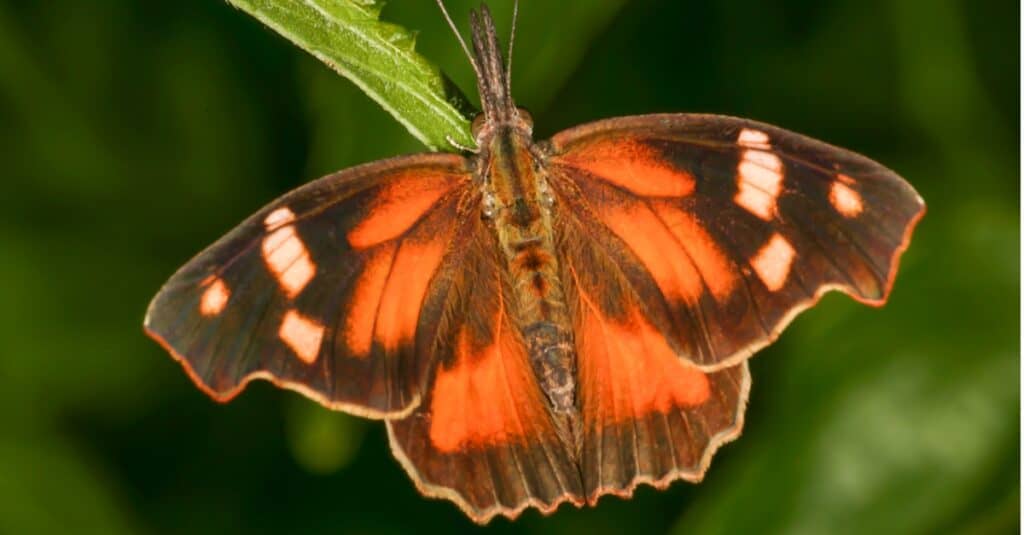
The American snout butterfly is so named due to its distinctive snout. Scientists believe that it lets them mimic dry leaves and camouflage themselves to avoid predators. These butterflies have a wingspan of 1.4 to 2 inches. Besides being relatively small, these butterflies come in dull colors, which probably complements the snout’s ability to effectively camouflage the creatures. Upper wing surfaces are brownish-black with orange patches. The forewings have white spots. But the hind wing underside contrasts those subdued colors with beautiful purples and browns.
5. Blue Morpho
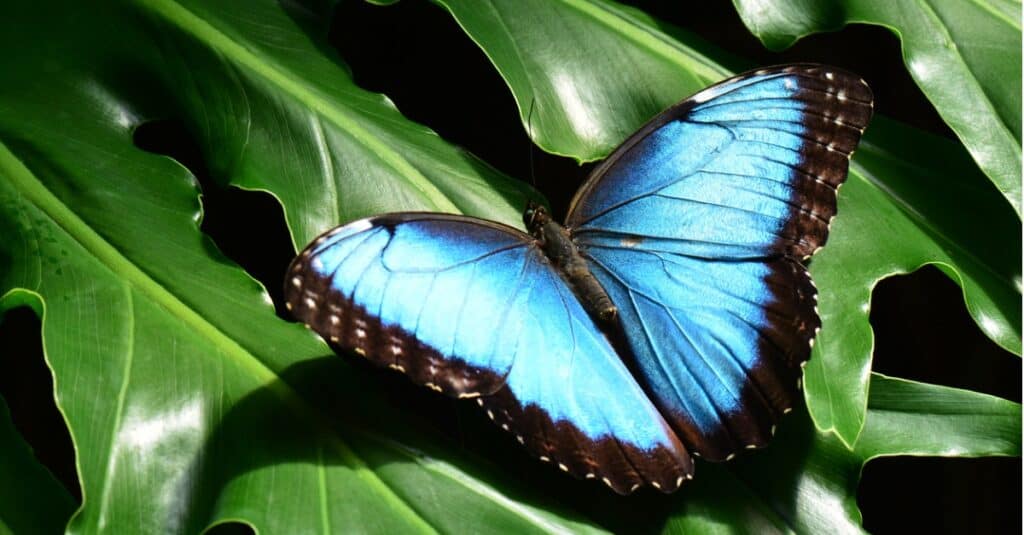
Belonging to the tropical areas of Latin America, the blue morpho is a striking butterfly. Its iridescent, vivid blue color consists of microscopic scales that reflect light off the wings. The underside of its wings is dull brown and, when closed, offers camouflage against birds, insects, and other predators. In-flight, the flapping blue and brown gives the illusion the morpho is disappearing and reappearing. They are also one of the largest butterflies in the world, with a wing size of five to eight inches. With a lifespan of only 115 days, they live out their lives finding and eating desired fruit. Besides natural predators like the jacamar who prey on the morpho, they also have their habitats decimated by encroachment by humans.
6. Sleepy Orange
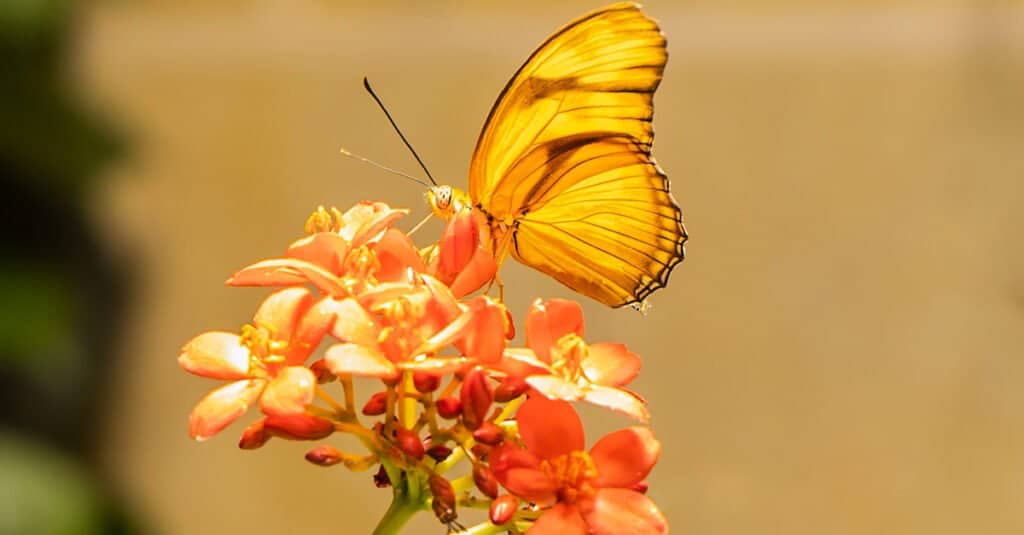
The sleepy orange butterfly is known for its distinctive bright orange coloring, often with black borders across the wings’ upper sides. However, the underside colors vary based on the seasons. In summer, the wings will be a sharp yellow with red highlights. However, in colder seasons, the wings keep a brown shade with comparatively heavier markings.
They have a wing size of 1.4 to 2.24 inches. Interestingly, there’s nothing sleepy about these creatures, despite their name. They’re quite busy and are active all year round across Central America and the southern region of North America.
7. Creamy Marblewing
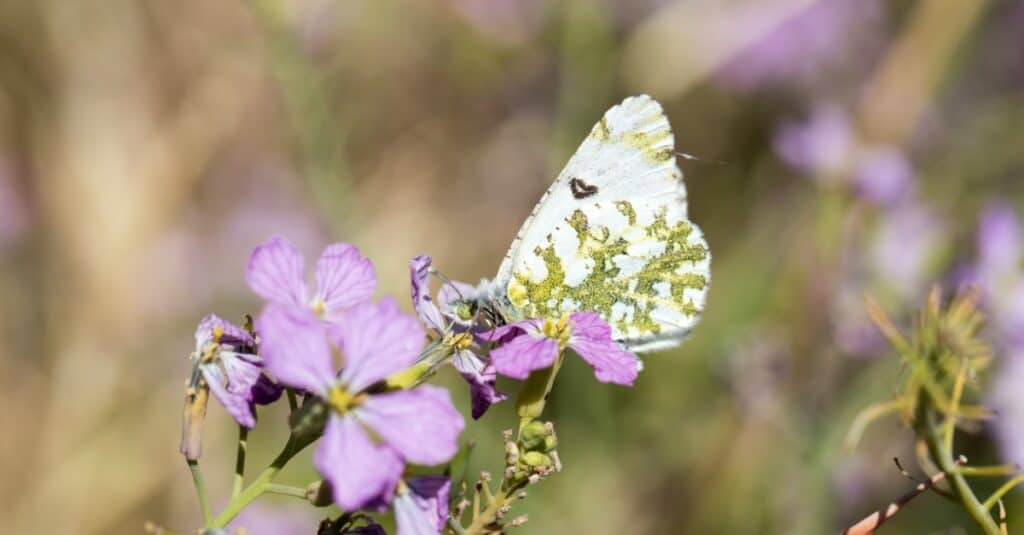
The creamy marblewing butterfly population spans much of southern Alaska to northern New Mexico. In between, you’ll find these insects in California, Arizona, Minnesota, and Idaho. They like open, free-range fields and meadows.
These butterflies have a head of furry scales with green and large, round eyes of the same green color. The underside of the wings are cream with a curious marble-like greenish hue. The top surface is creamy white with black markings along the tips and edges.
The creamy marblewing lays eggs on terminal flower buds. These plants tend to a variety of the mustard family. The insect larvae feed on the flowers, buds, and fruits of the plants.
8. Small Copper
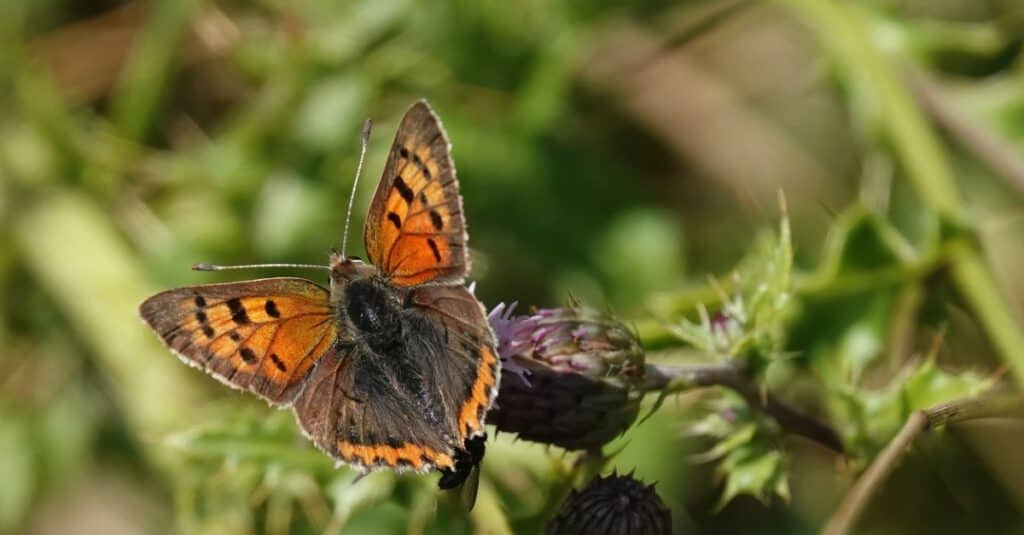
Famous for its speed and vibrant forewings of copper color, the small copper butterfly is all over Britain and Ireland . They like sunny, dry habitats, including woodland edges, downland, and waste ground.
Small copper butterflies have a wingspan of 1.25 to 1.4 inches. The upper wing side is a shiny yellow with black blotches and dark brown margins. The underside of their wings is bright orange with more dark blotches and margins highlighted by reddish stripes. These features easily distinguish these butterflies from other types. In gardens, they prefer diet of nectar-rich foods and, for overwintering, they seek shrubs and climbing ivy.
9. Red Admiral
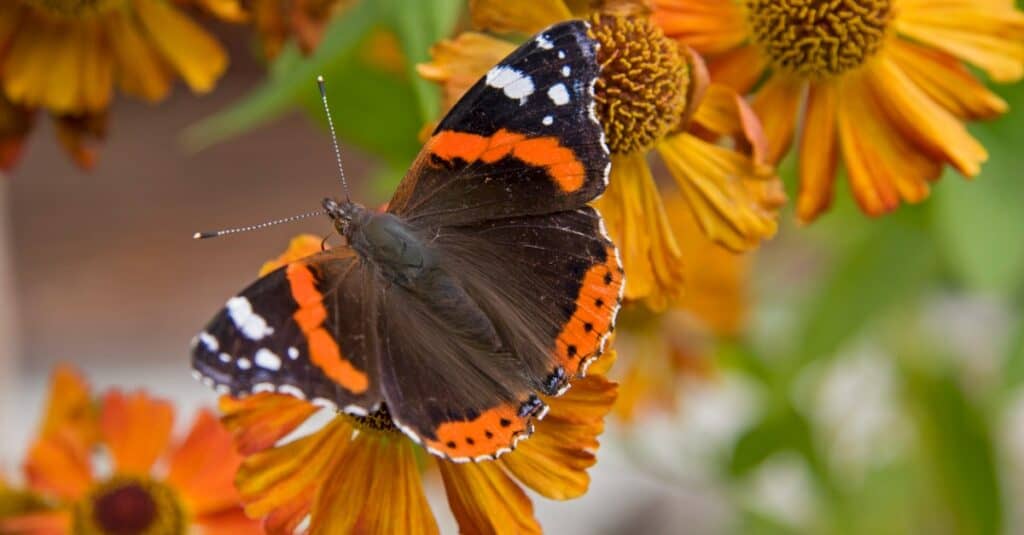
The red admiral is a distinctive butterfly found in Britain and Ireland. They belong to the Nymphalids family and are considered medium-sized creatures. They have a wing size of 2.6 to 2.8 inches and are famous for striking black wings with a blend of orange bands and white spots.
Red admirals are often found in parks and gardens, marshes, moist fields and woods, and open fields. They also live in habitats ranging from tundra to the sub-tropical.
The red admiral is migratory, and during the spring and autumn, they’ll head north. One of the many interesting facts about these insects is they’re extremely territorial. Females only mate with males that control their habitat. Males also settle on ridge tops and wait for the female. There, the female will lay eggs on plant leaves.
10. Swallowtail
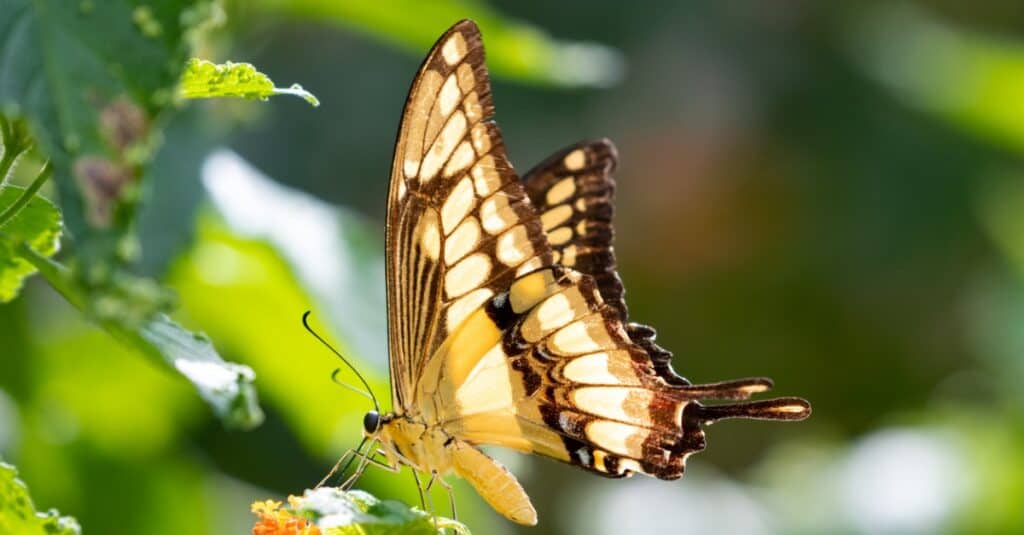
Large and colorful, the swallowtail butterfly comes in more than 500 varieties. The swallowtail is a type of butterfly with a bizarre wingspan of 0.3 to 3.5 inches. Belonging to the Papilionidae family, these creatures are found all over the world except in frigid Antarctica. The greatest populace and diversity is in sub-tropical regions like East and Southeast Asia. A total of 40 species fly in North America. There’s an even dozen in Europe.
One of this butterfly’s interesting facts is the name came from the extensions in their hind wings, which are tail-like. However, we should note some species don’t have the extensions. There’s a range of colors and the majority of species feed solely on milk parsley, while others prefer wild carrots.
Follow A-Z Animals!
- See today’s latest and most exciting animal news when you follow A-Z Animals. Click here to access the A-Z Animals profile page and be sure to hit the Follow button here or at the top of this article!
- Have feedback? Add a comment below!
The post Discover 10 Types of Butterfly appeared first on A-Z Animals .
Post a Comment